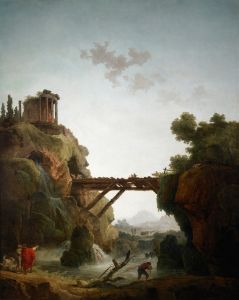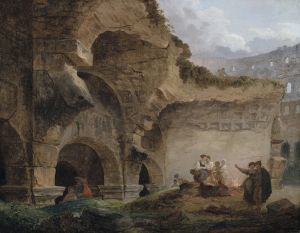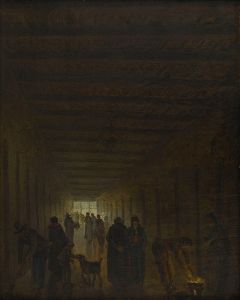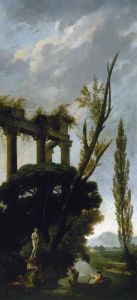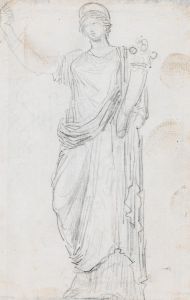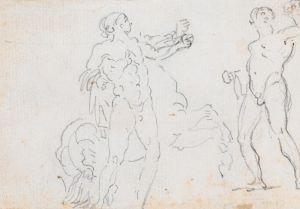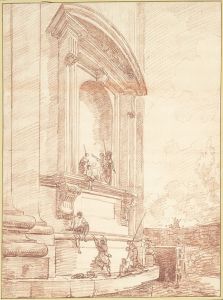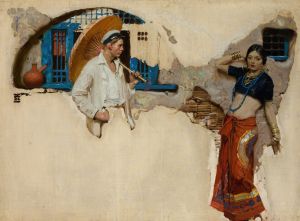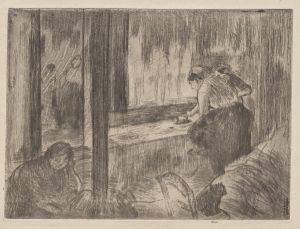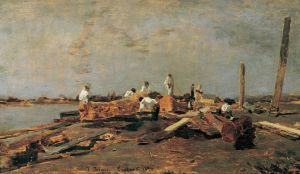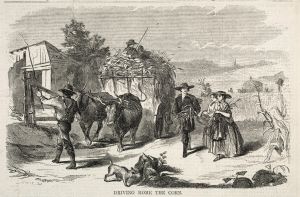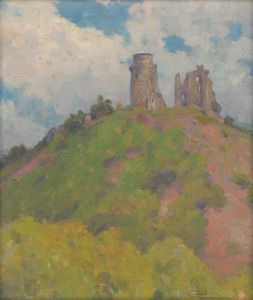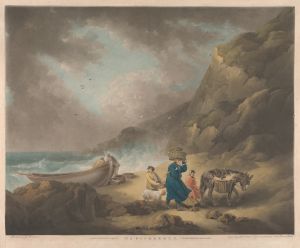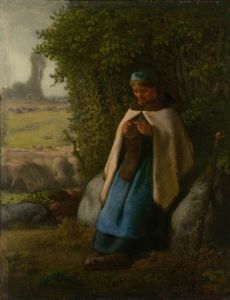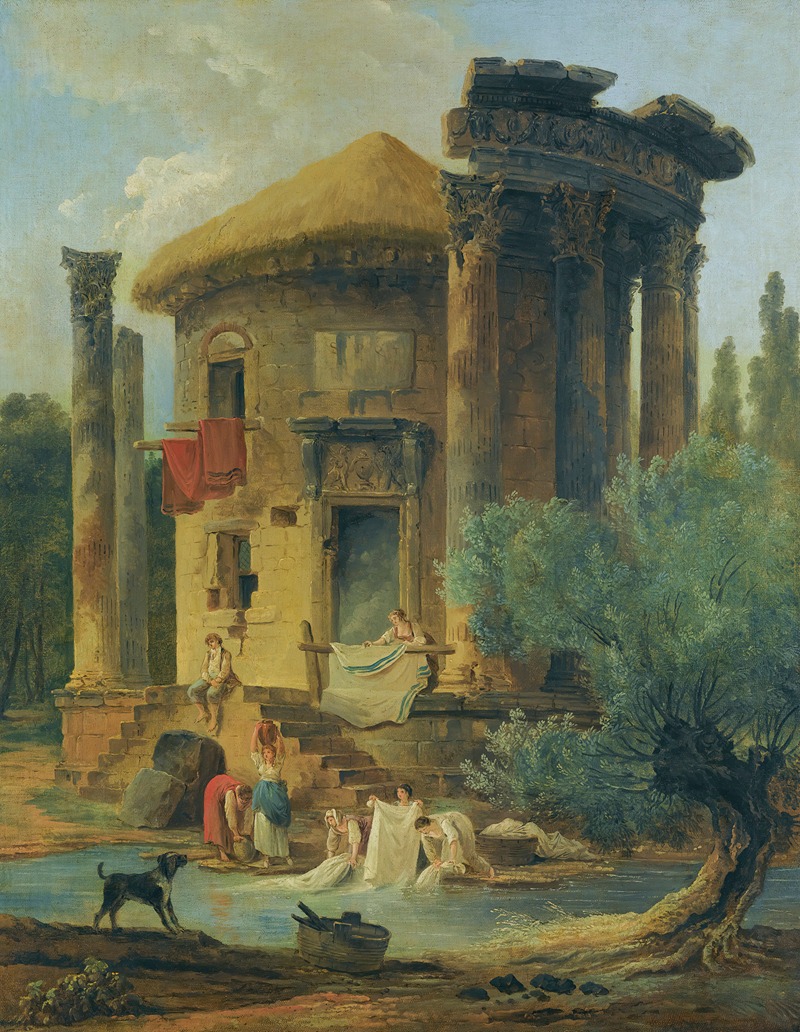
Washerwomen At The Edge Of A River, Beneath A Ruined Circular Temple
A hand-painted replica of Hubert Robert’s masterpiece Washerwomen At The Edge Of A River, Beneath A Ruined Circular Temple, meticulously crafted by professional artists to capture the true essence of the original. Each piece is created with museum-quality canvas and rare mineral pigments, carefully painted by experienced artists with delicate brushstrokes and rich, layered colors to perfectly recreate the texture of the original artwork. Unlike machine-printed reproductions, this hand-painted version brings the painting to life, infused with the artist’s emotions and skill in every stroke. Whether for personal collection or home decoration, it instantly elevates the artistic atmosphere of any space.
"Washerwomen At The Edge Of A River, Beneath A Ruined Circular Temple" is a painting by the French artist Hubert Robert, who is renowned for his landscapes and capriccios, which often feature classical ruins. Robert, born in 1733 and deceased in 1808, was a prominent figure in the 18th-century French art scene and was known for his ability to blend reality with imagination, creating evocative scenes that captured the romantic fascination with antiquity.
The painting in question depicts a serene yet evocative scene where washerwomen are engaged in their daily labor at the edge of a river. The backdrop of this quotidian activity is a grand, albeit ruined, circular temple. This juxtaposition of the mundane with the monumental is a hallmark of Robert's work, reflecting the 18th-century European fascination with the ruins of ancient civilizations and the passage of time.
Robert's work often reflects his experiences and observations during his time in Italy, where he spent several years studying and drawing inspiration from the ruins of Rome. This influence is evident in "Washerwomen At The Edge Of A River, Beneath A Ruined Circular Temple," as the architectural elements in the painting echo the grandeur and decay of Roman structures. The circular temple, though in ruins, suggests a once-majestic edifice, possibly inspired by the Pantheon or other similar Roman temples.
The painting is characterized by Robert's skillful use of light and shadow, which adds depth and drama to the scene. The light appears to gently illuminate the washerwomen and the temple, creating a contrast between the lively activity in the foreground and the silent, enduring presence of the ruins in the background. This interplay of light not only enhances the visual appeal of the painting but also underscores the theme of continuity and change.
Robert's attention to detail is evident in the depiction of the washerwomen, who are portrayed with a sense of realism and vitality. Their presence adds a human element to the scene, grounding the viewer in the everyday life of the period. The river, depicted with fluid brushstrokes, adds a dynamic element to the composition, guiding the viewer's eye through the painting and linking the human activity with the natural and architectural elements.
"Washerwomen At The Edge Of A River, Beneath A Ruined Circular Temple" exemplifies Hubert Robert's ability to capture the essence of a moment while simultaneously evoking a sense of timelessness. His work invites viewers to reflect on the relationship between humanity and the remnants of the past, a theme that resonates with the broader cultural and intellectual currents of the Enlightenment era.
The painting is part of Robert's broader oeuvre, which includes numerous works that explore similar themes of ruins and the passage of time. His paintings were highly regarded during his lifetime, and he held prestigious positions, including a role as a curator at the Louvre. Today, Robert's works continue to be celebrated for their artistic merit and their ability to evoke the romantic spirit of the 18th century.





